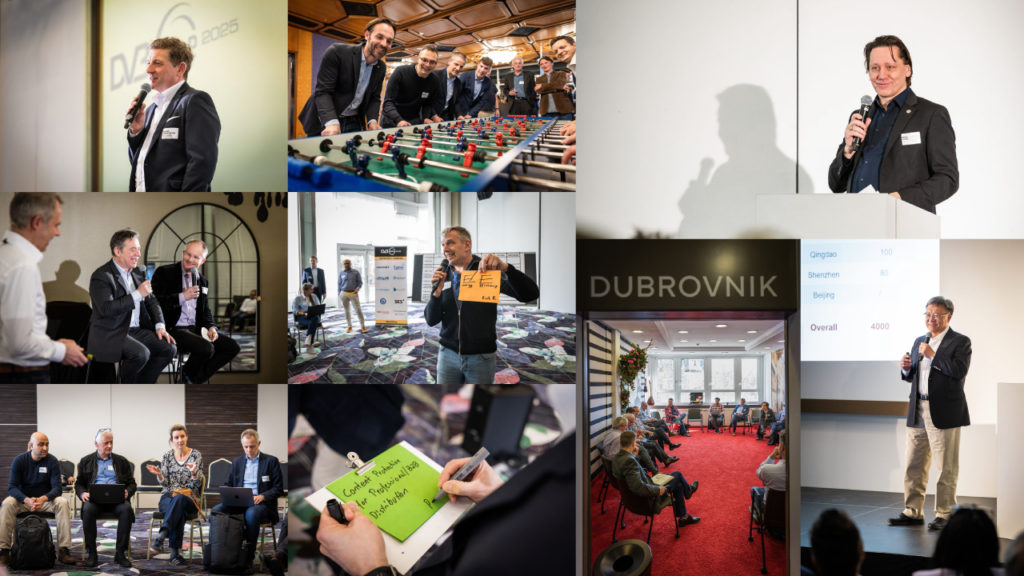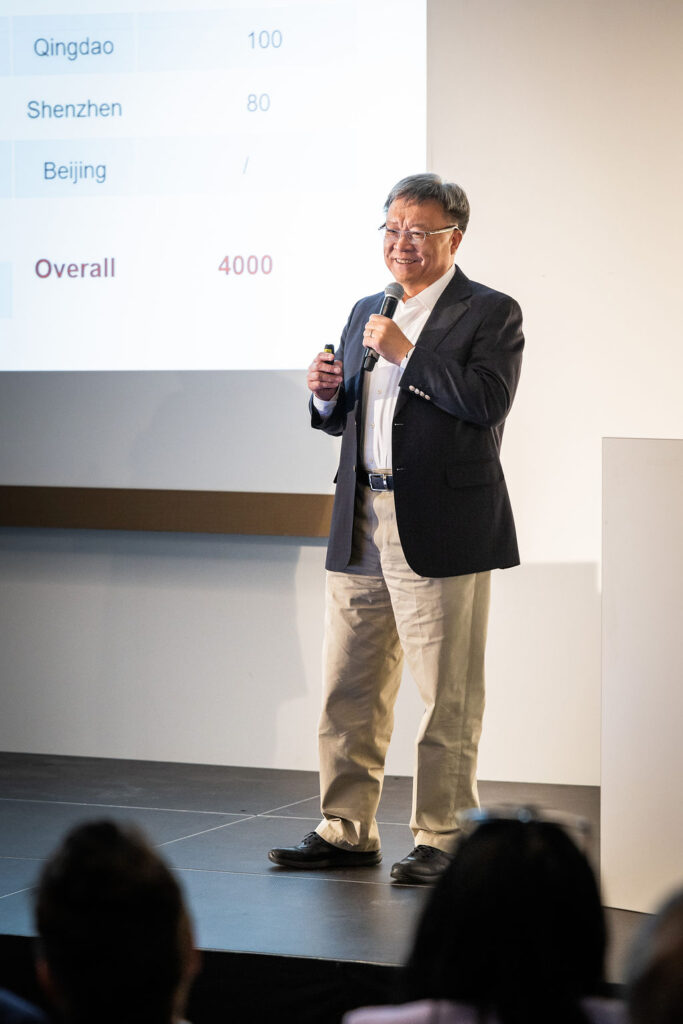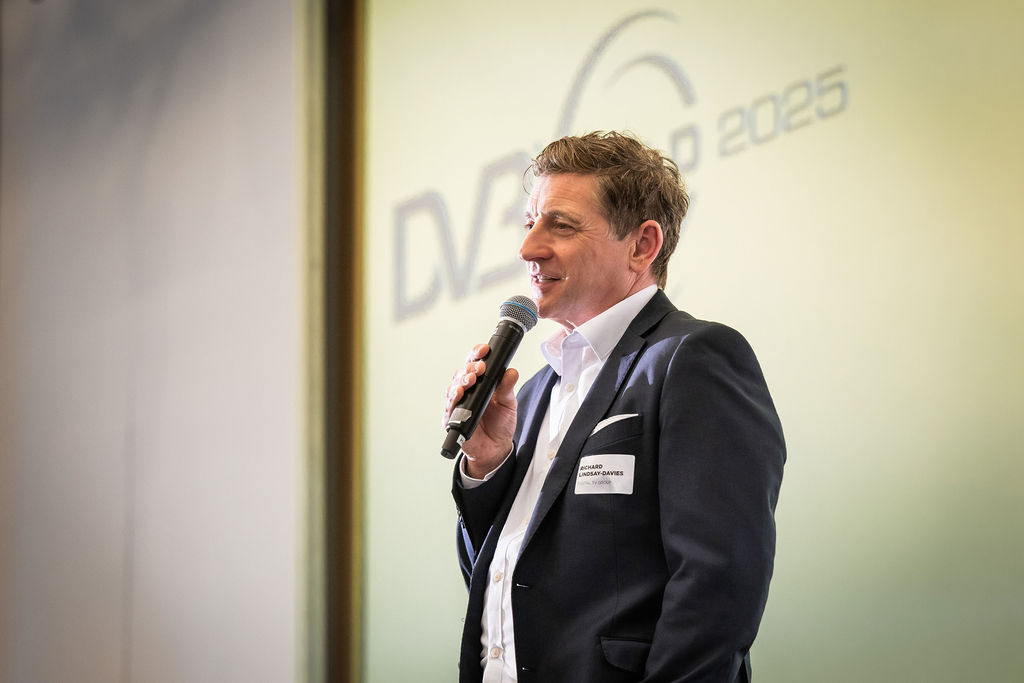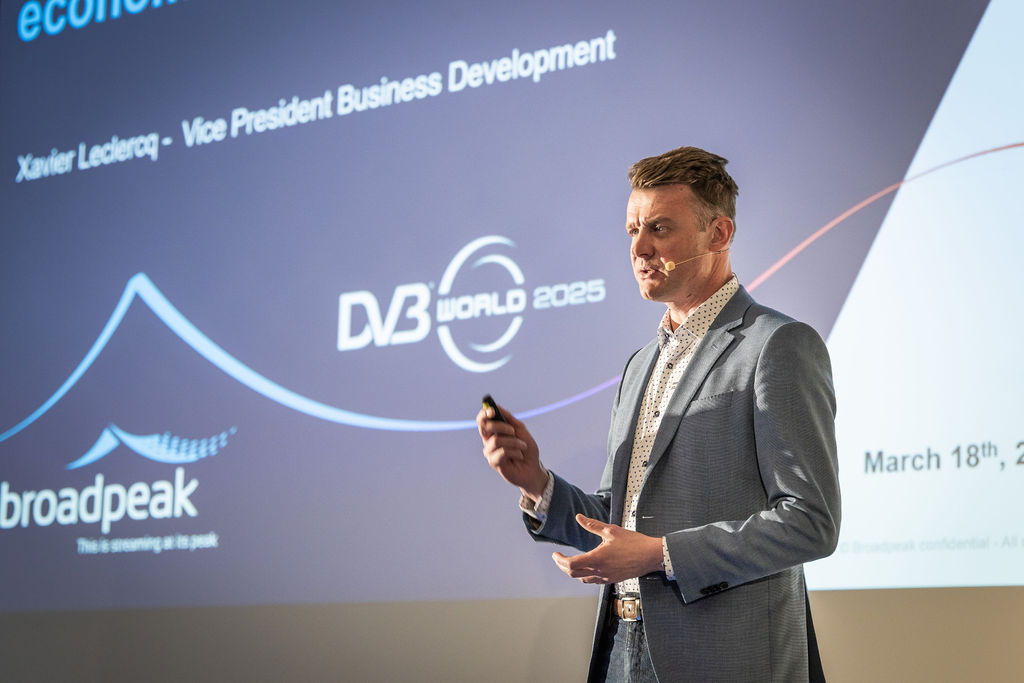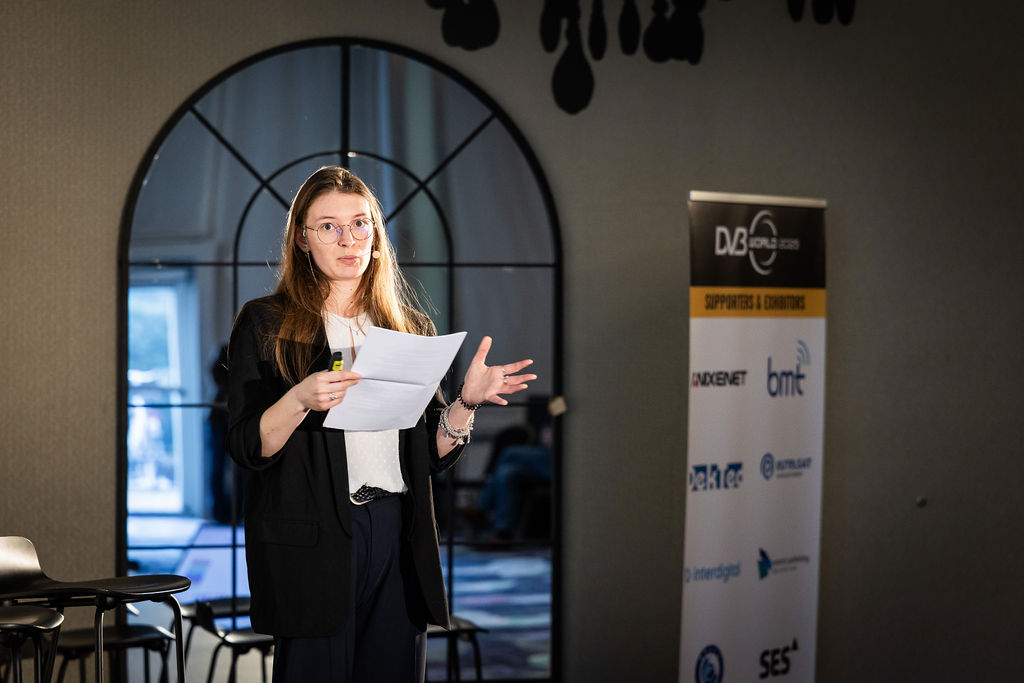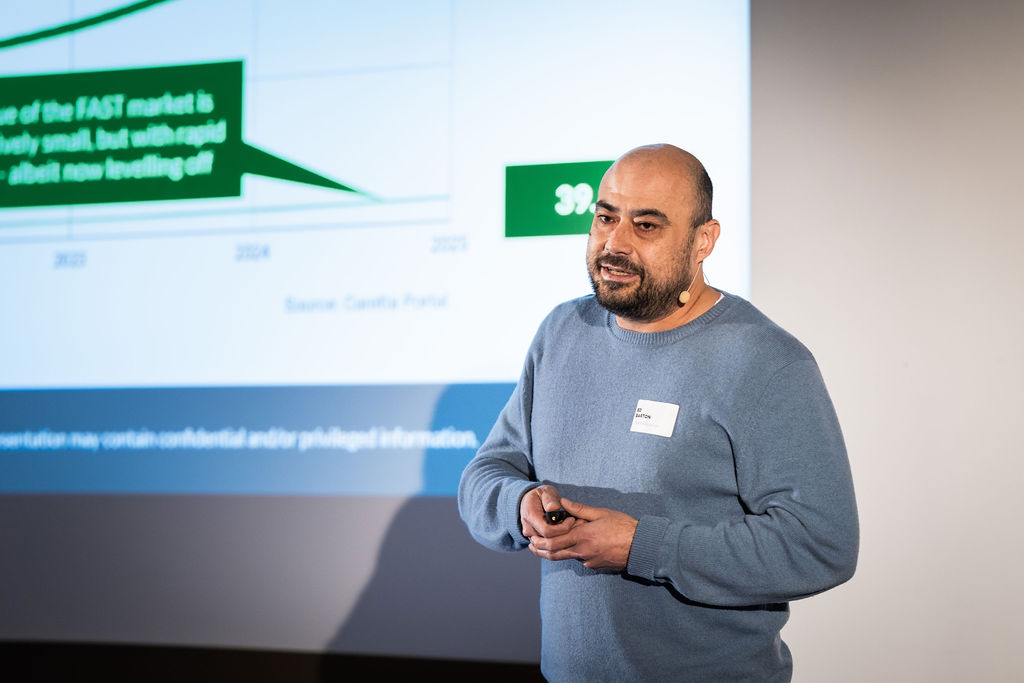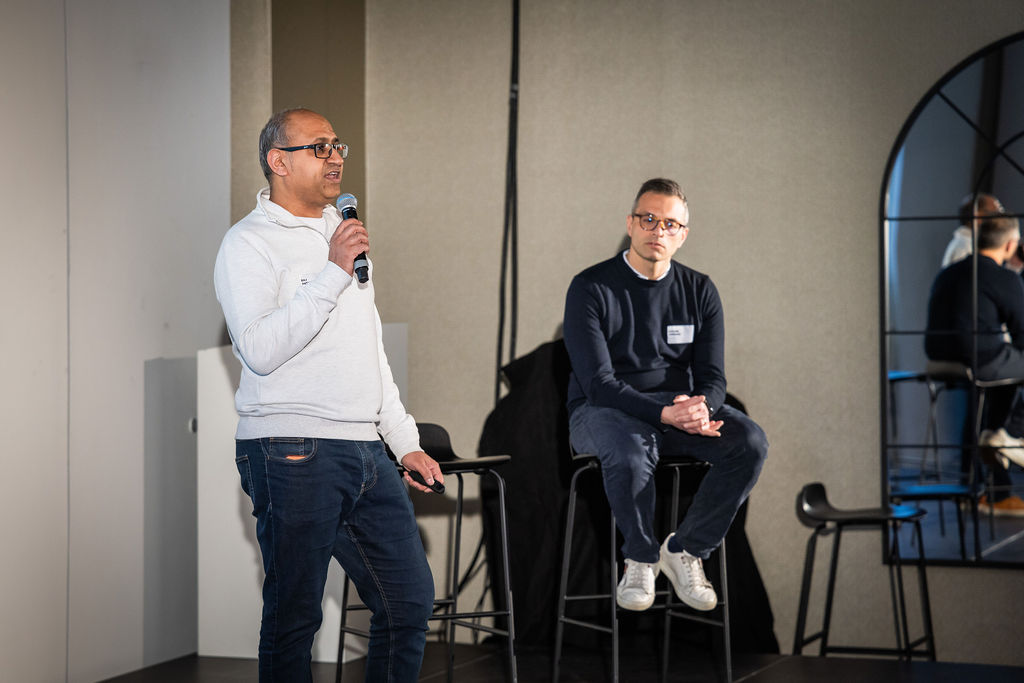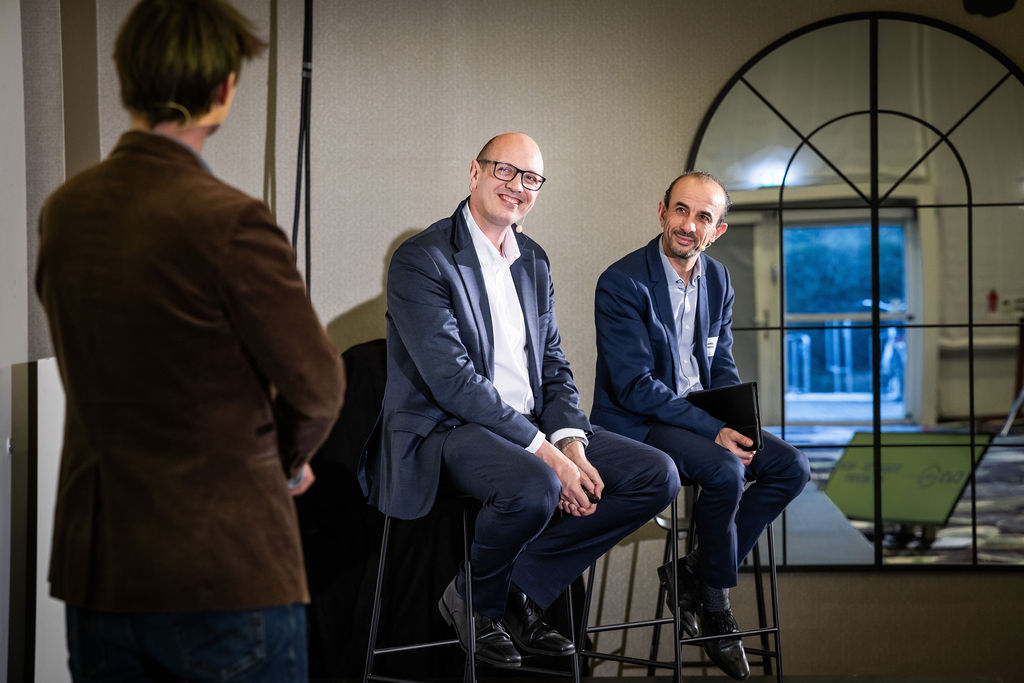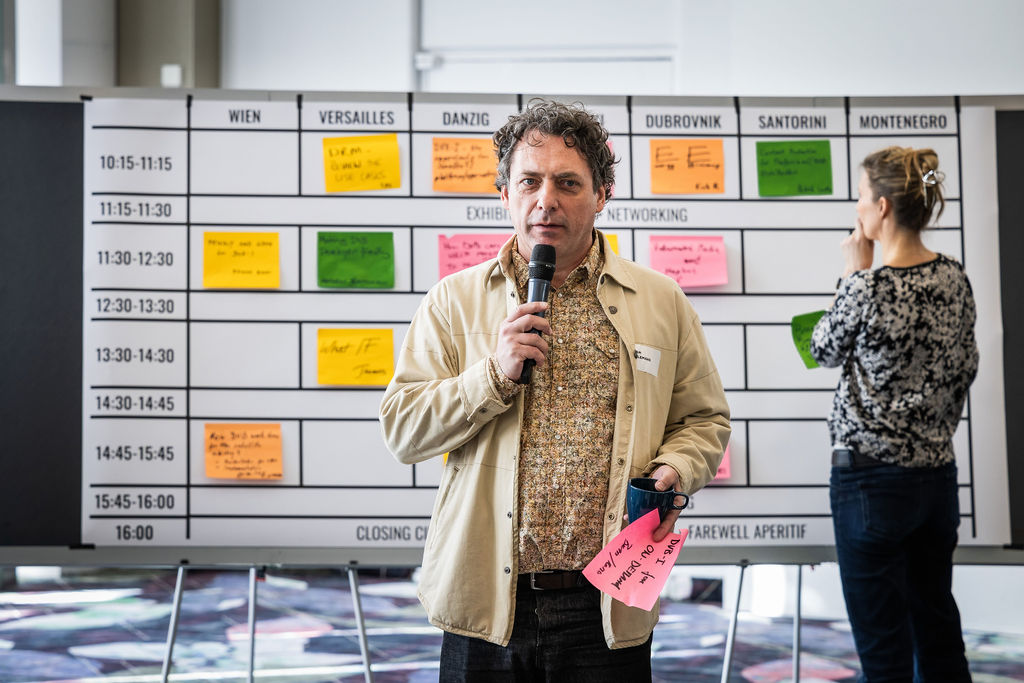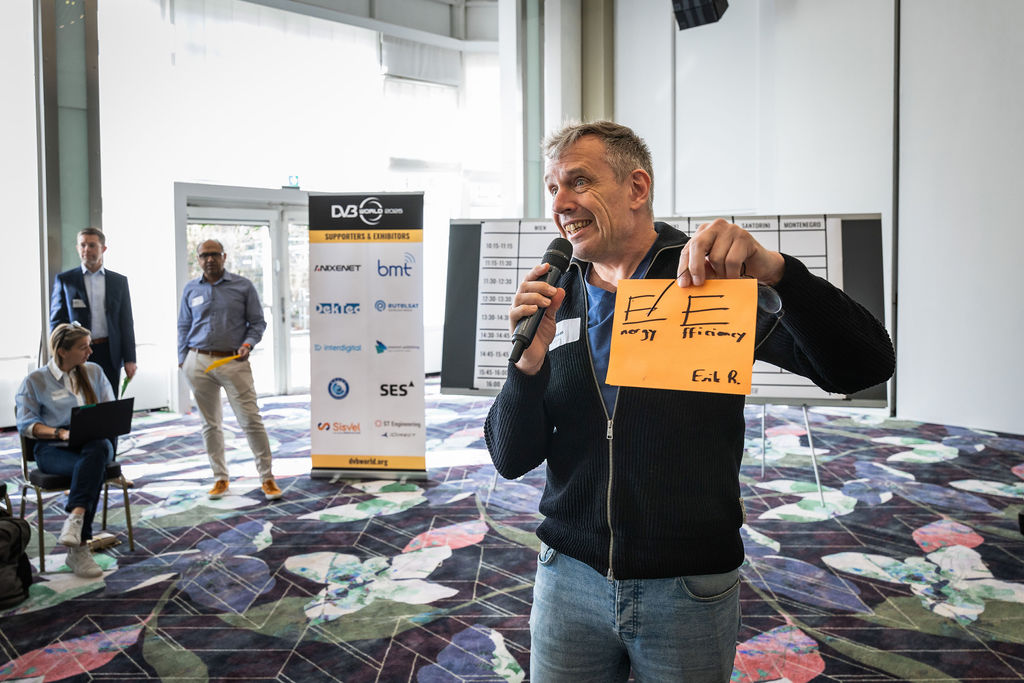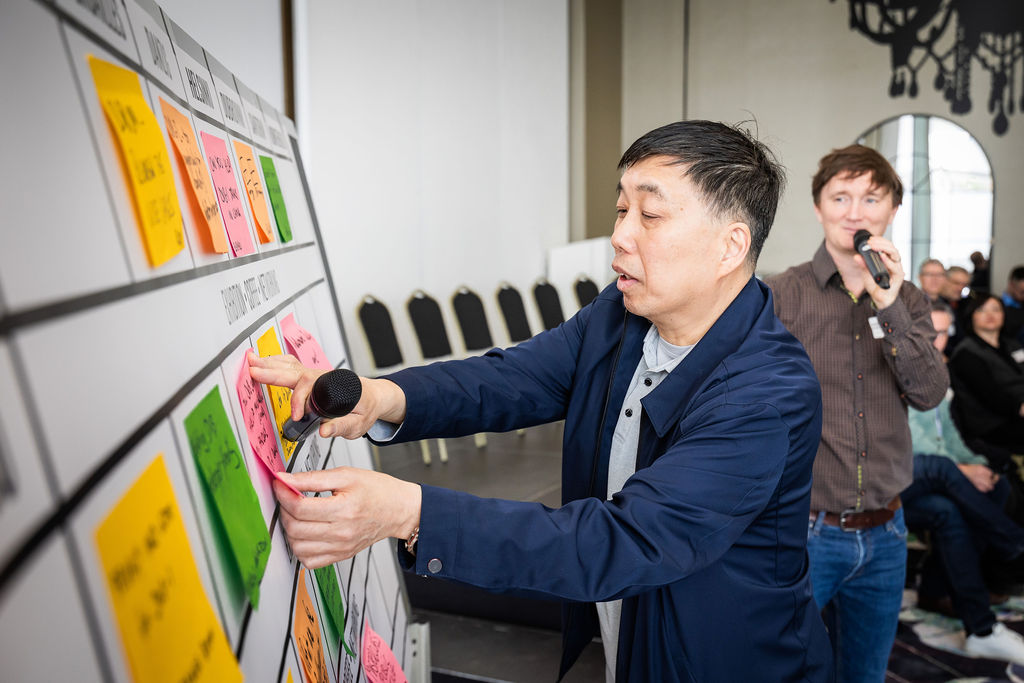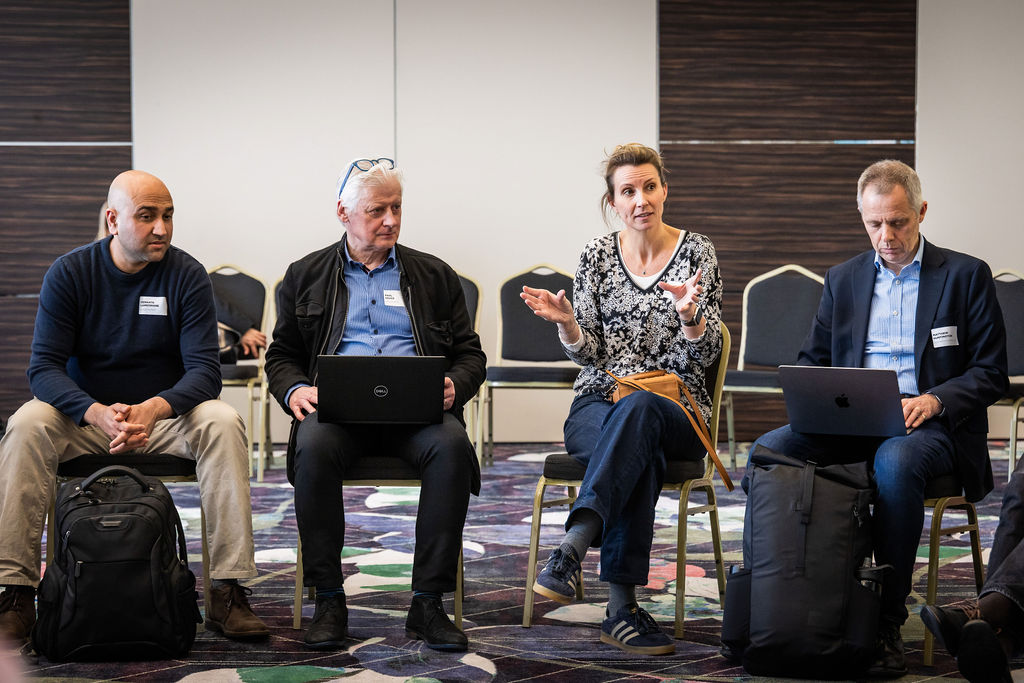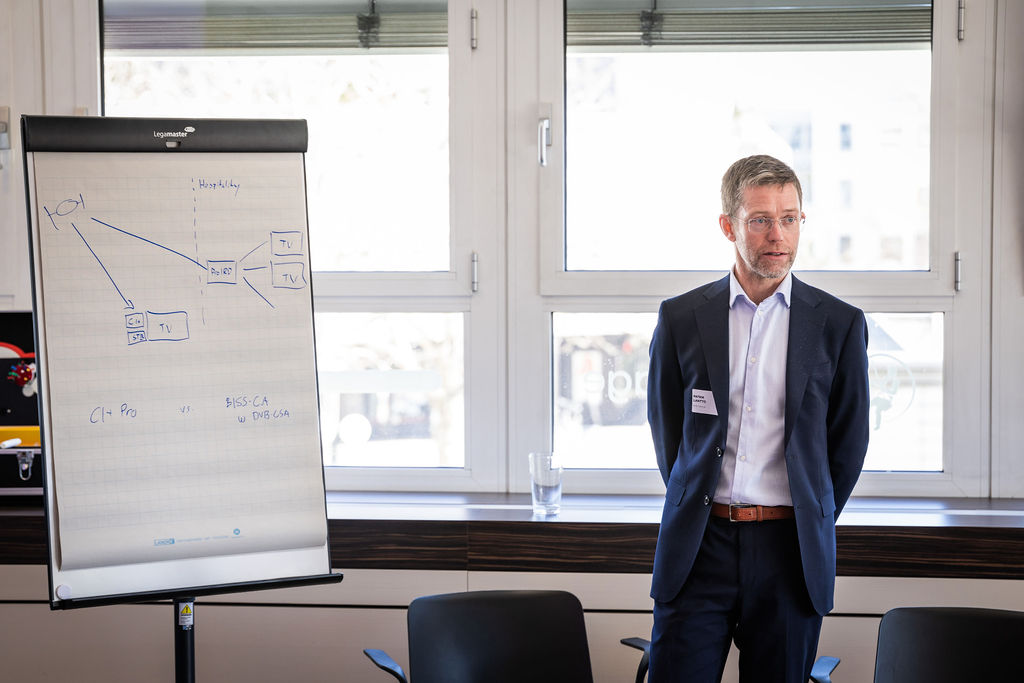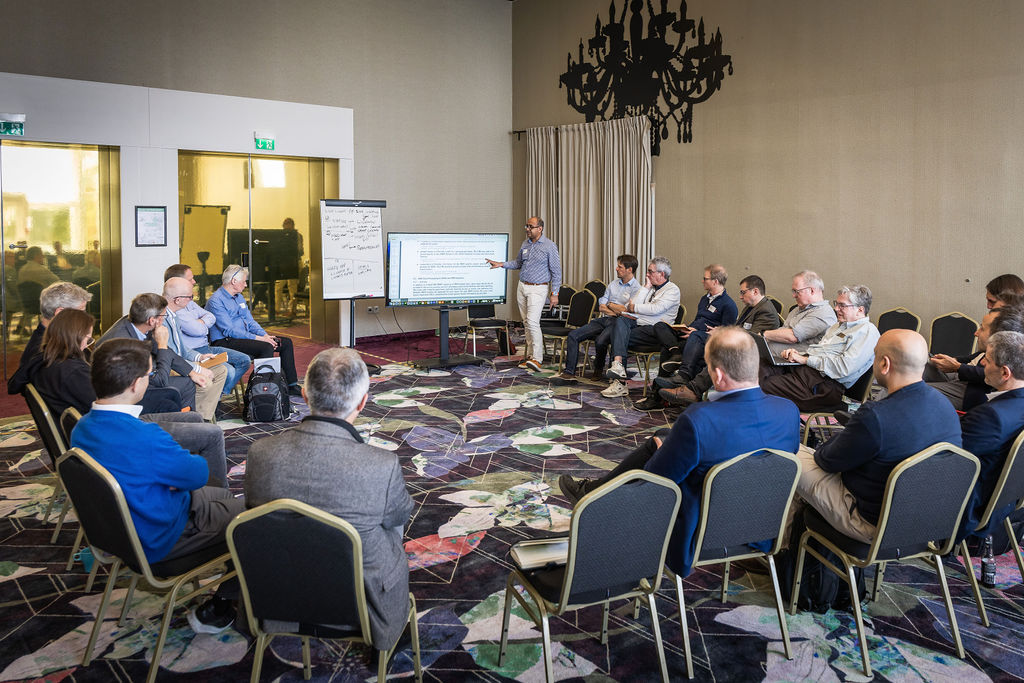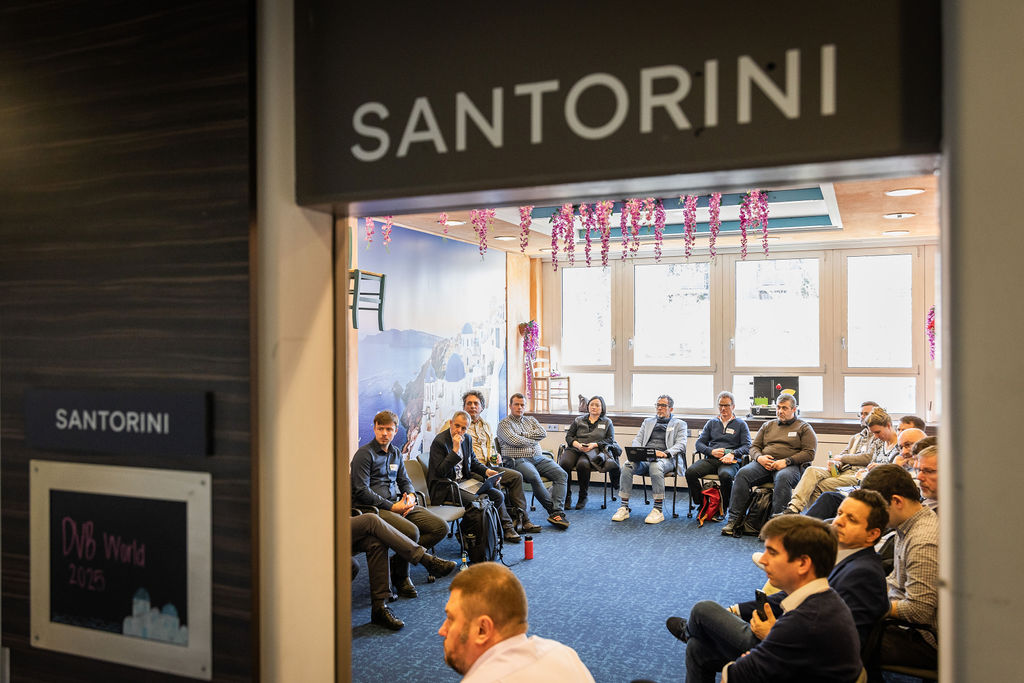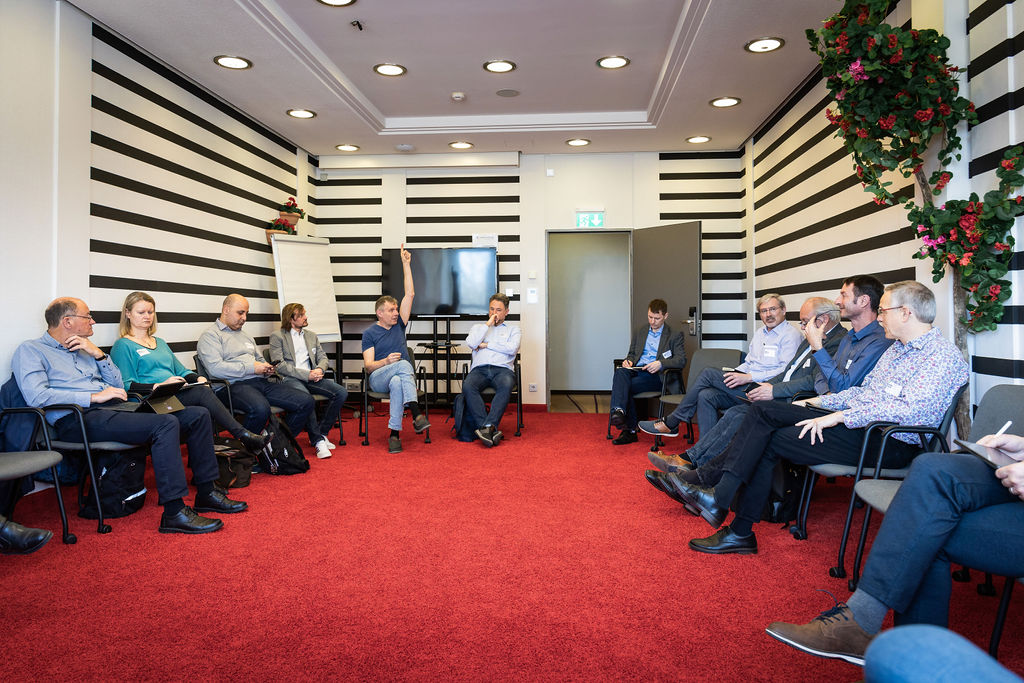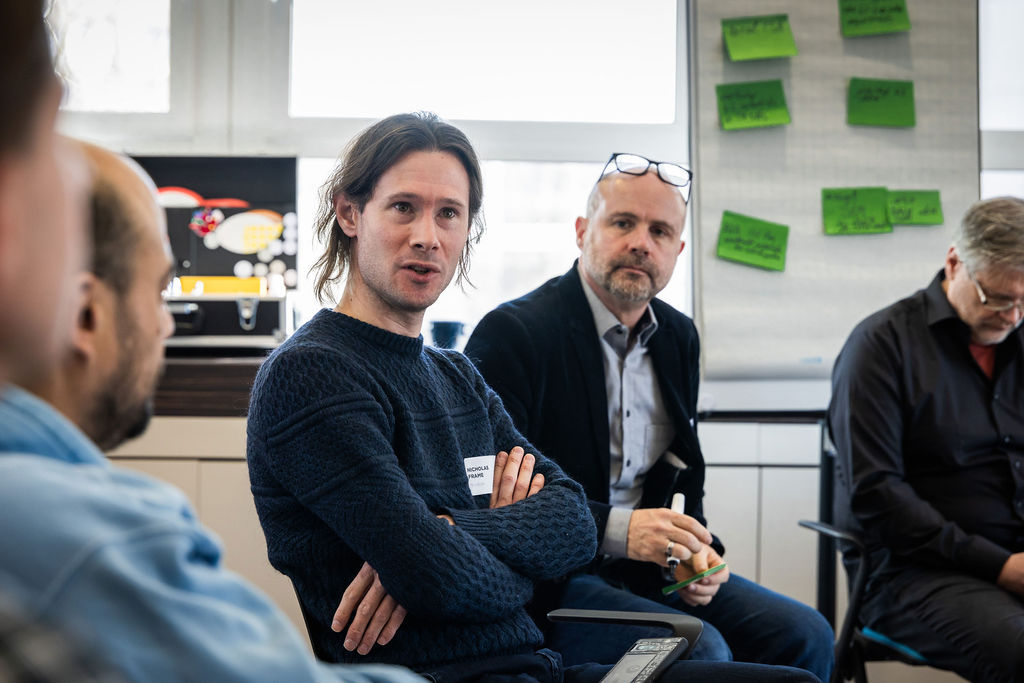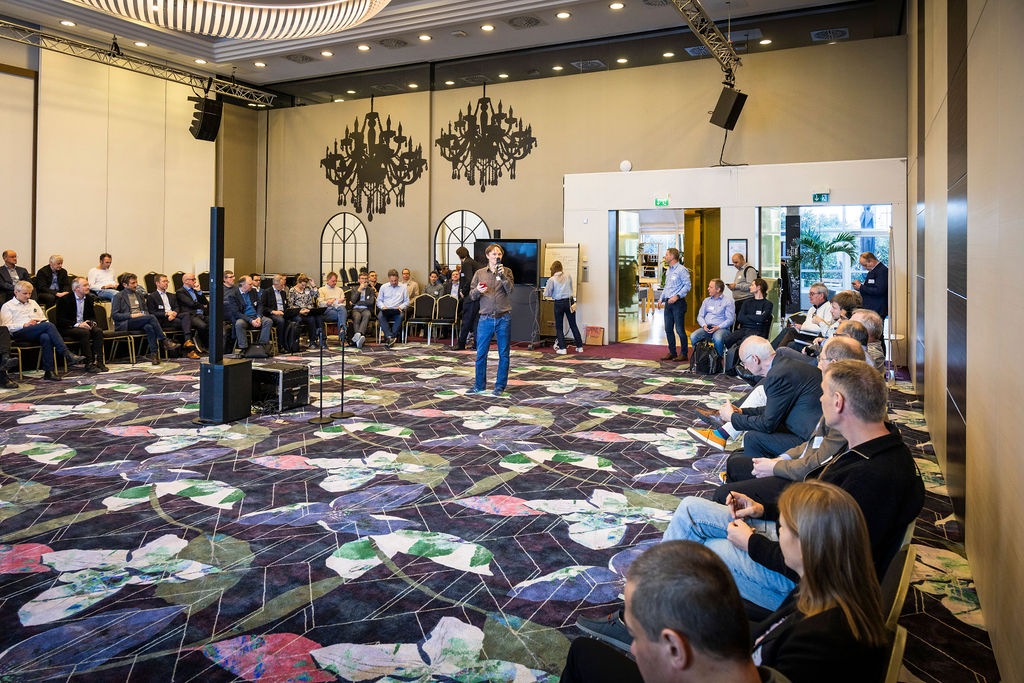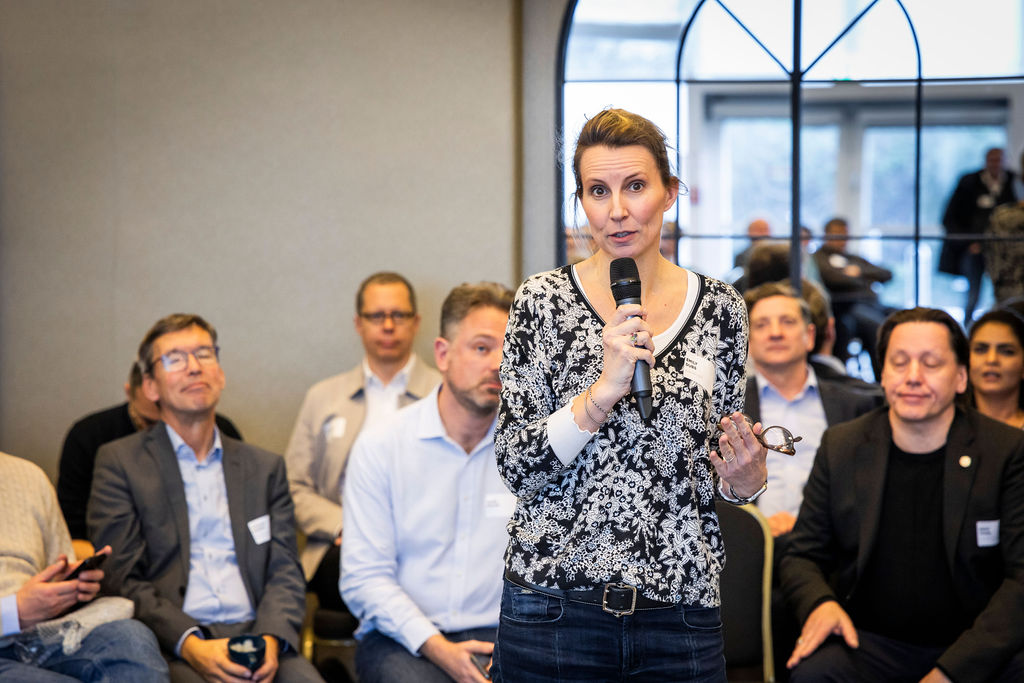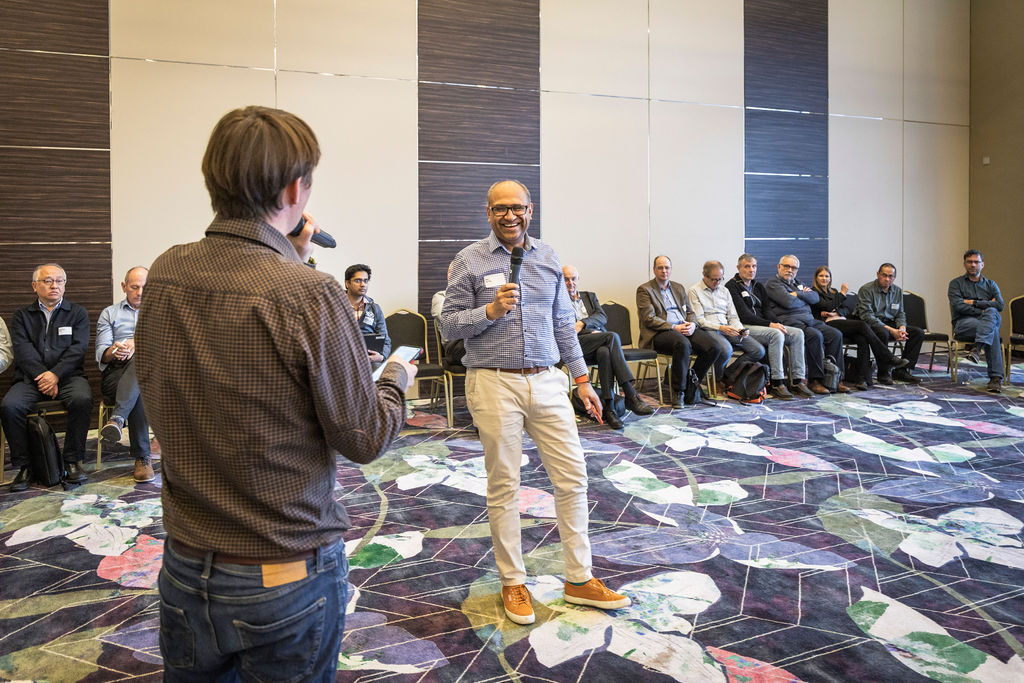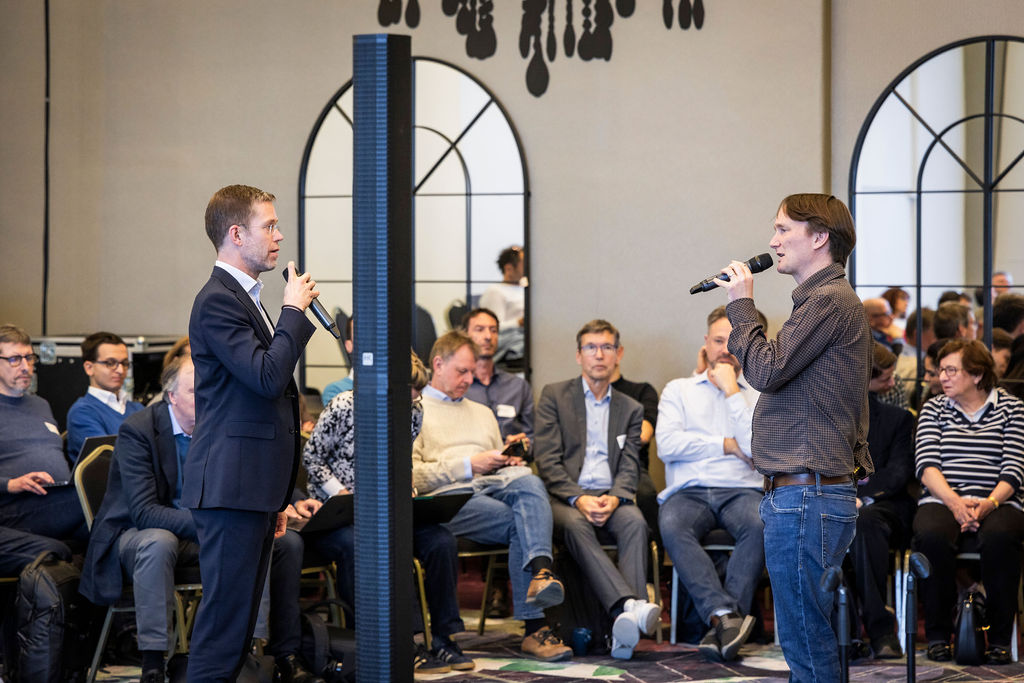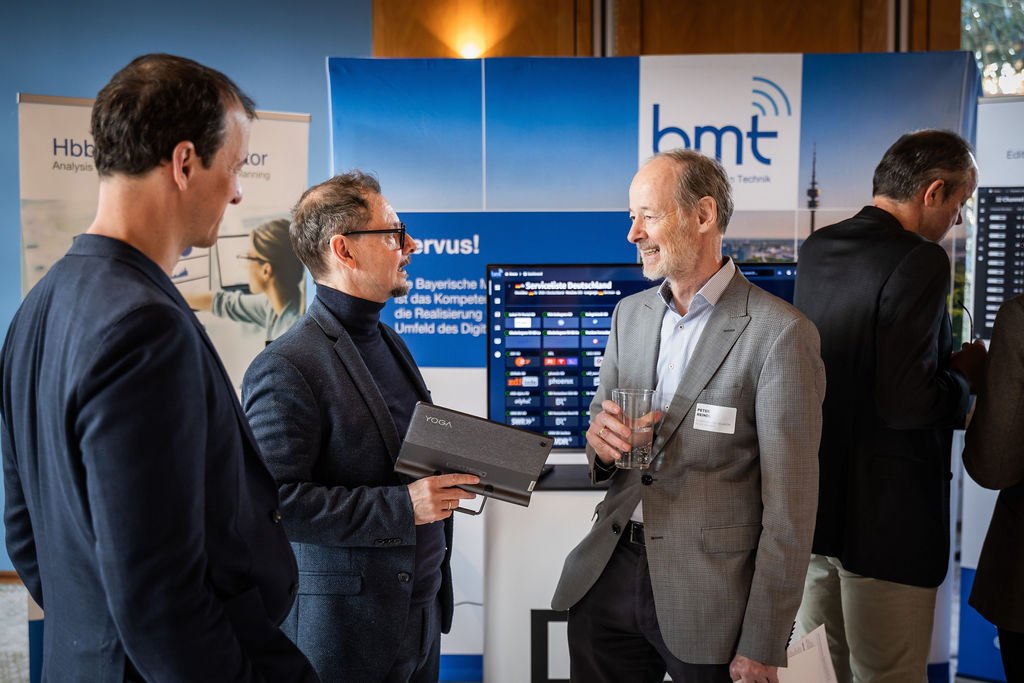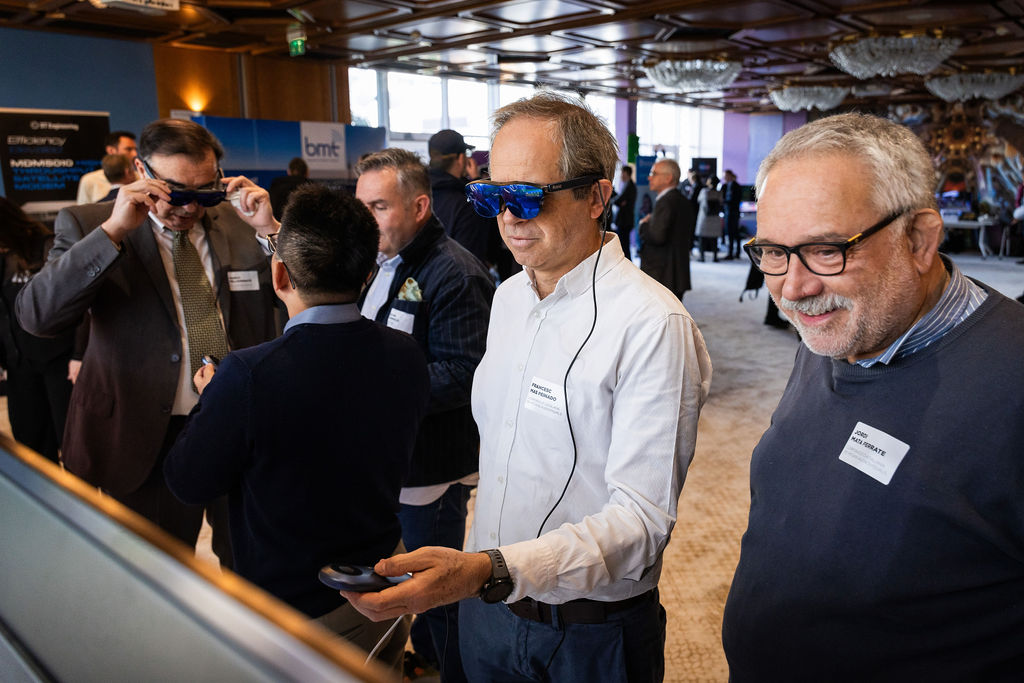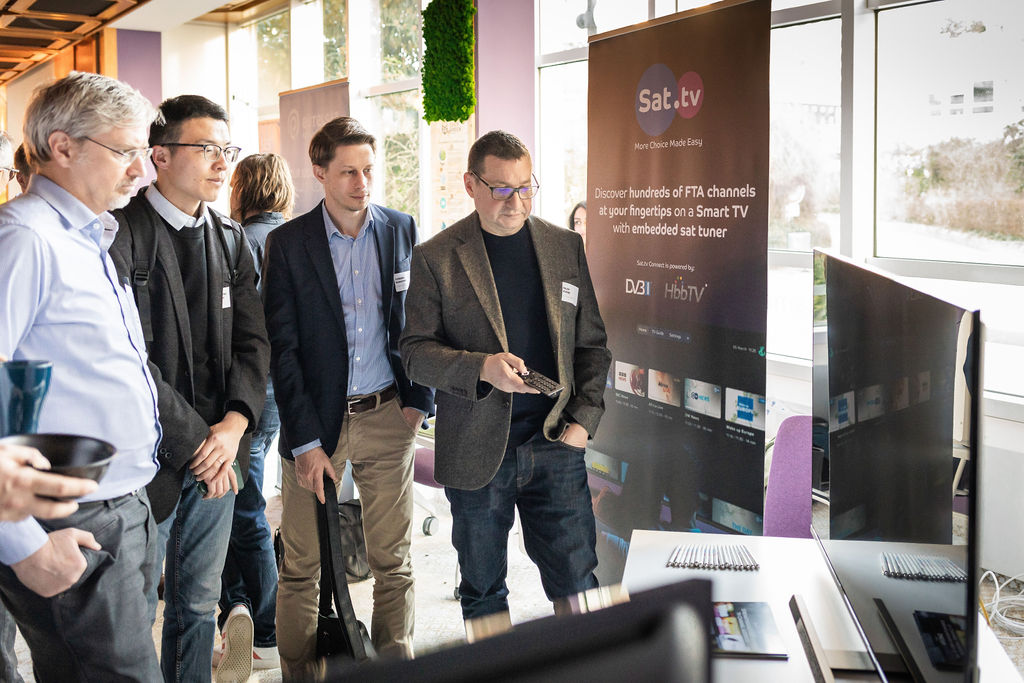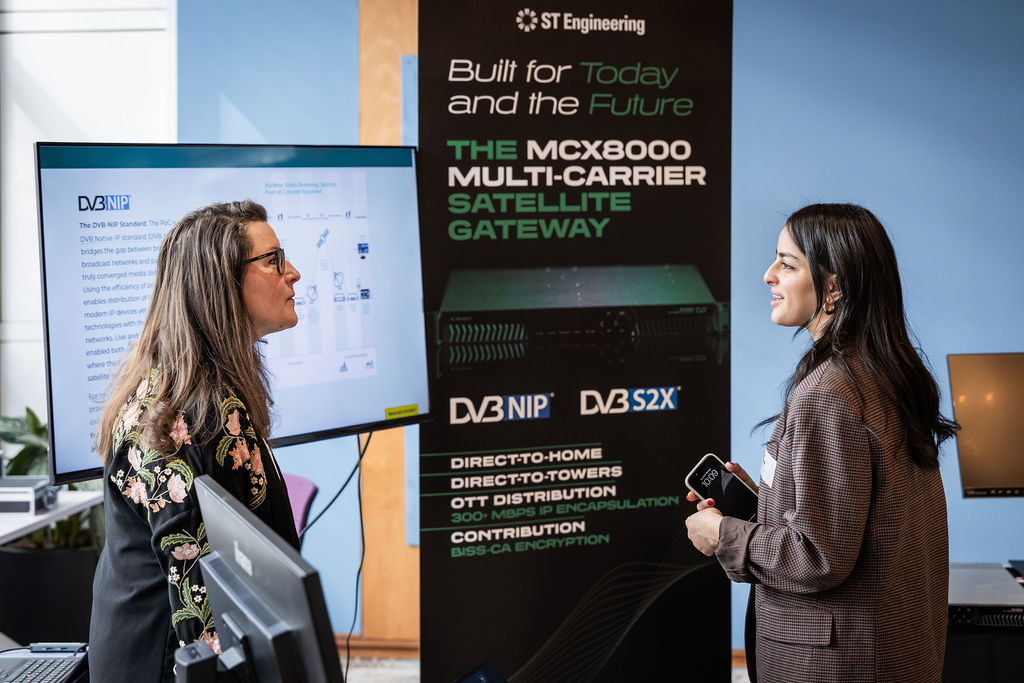DVB World 2025 once again empowered its attendees to drive the agenda – and the conversations – in Munich last week. Adopting an unconference format for the fourth year running, a total of 22 sessions, pitched and hosted by the participants, took place on Wednesday, following Tuesday afternoon’s more traditional conference format.
While DVB-I – from many angles – undoubtedly dominated the unconference agenda (see below), there was nevertheless a broad range of topics overall, taking in everything from satellite broadband, digital rights management and volumetric video to energy efficiency, inter-SDO collaboration and the future of the DVB Project itself.
The session reports for the unconference are available to DVB Members. See the member portal for the relevant link or contact the DVB Project Office.
Read on to see what you missed at DVB World 2025.
The conference
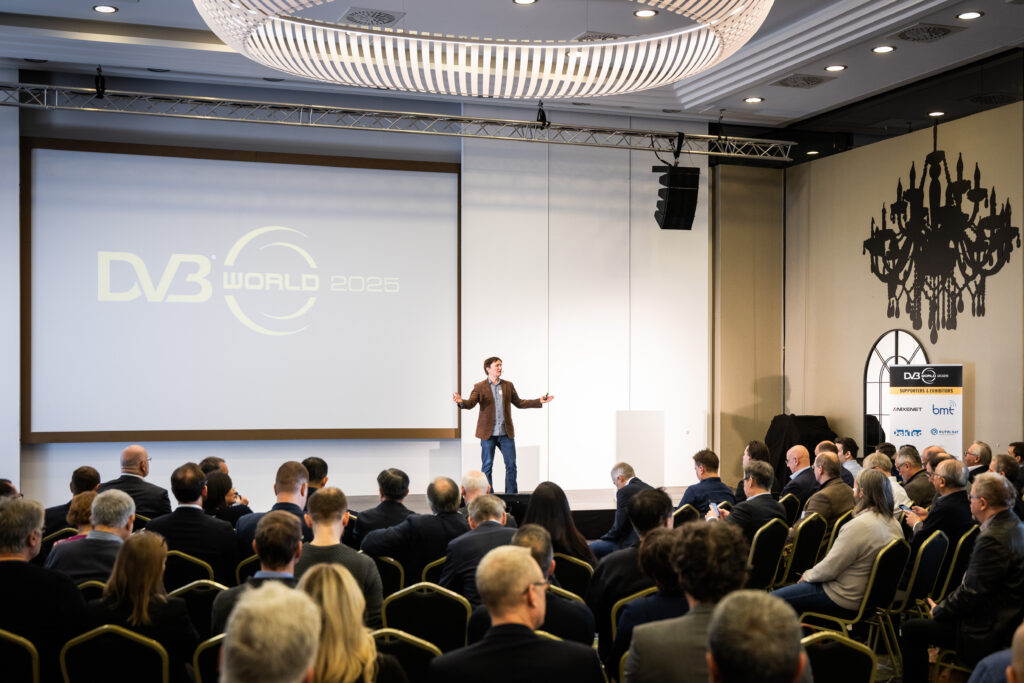
Event moderator Eoghan O’Sullivan welcomed the attendees to Munich where, for the second year running, the DVB World took place in the smartvillage Bogenhausen.
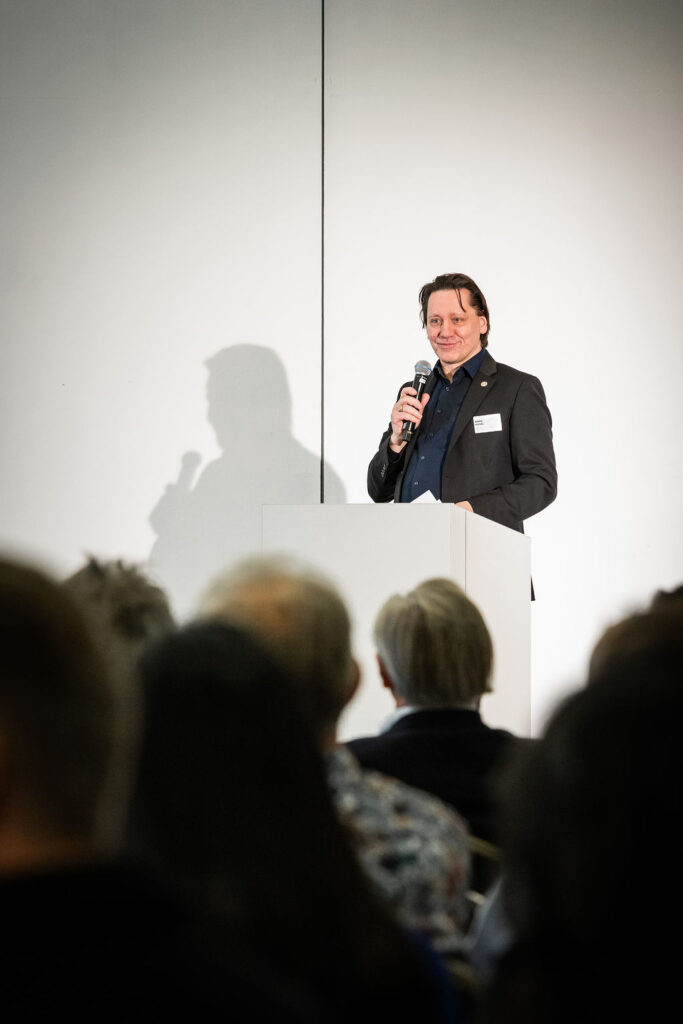
In his first DVB World as chair of the DVB Project, Remo Vogel (above) provided the opening address. He outlined some of the challenges facing the broader media industry and explained the work he is leading to ensure DVB can help its Members to address these challenges through open standards. He invited the community to actively participate in an ongoing process to shape a new strategy for the organization.
The first keynote speaker was Prof. Wen Gao of the AVS Workgroup of China, who explained why the industry there is targeting closer collaboration with the DVB Project, both on the roll-out of DVB services in China (he mentioned a possible DVB-I trial next year) and to better serve the consumer electronics market in Europe.
He was followed by a keynote from Richard Lindsay-Davies of the Digital TV Group, emphasizing the importance of strong, timely regulation to protect public value in the media sector; and one from Broadpeak’s Xavier Leclercq, who focused on the need for collaboration between telcos, broadcasters and advertisers to balance the economics of live distribution.
Unfortunately one of the advertised keynote speakers, Carine Chardon on ZVEI, was in the end unable to travel to Munich.
Ophélie Boucaud of Dataxis and Ed Barton of Caretta Research provided a pair of presentations looking at some of the latest trends in Europe’s media ecosystem, particularly with the growth of competition from global technology and entertainment brands.
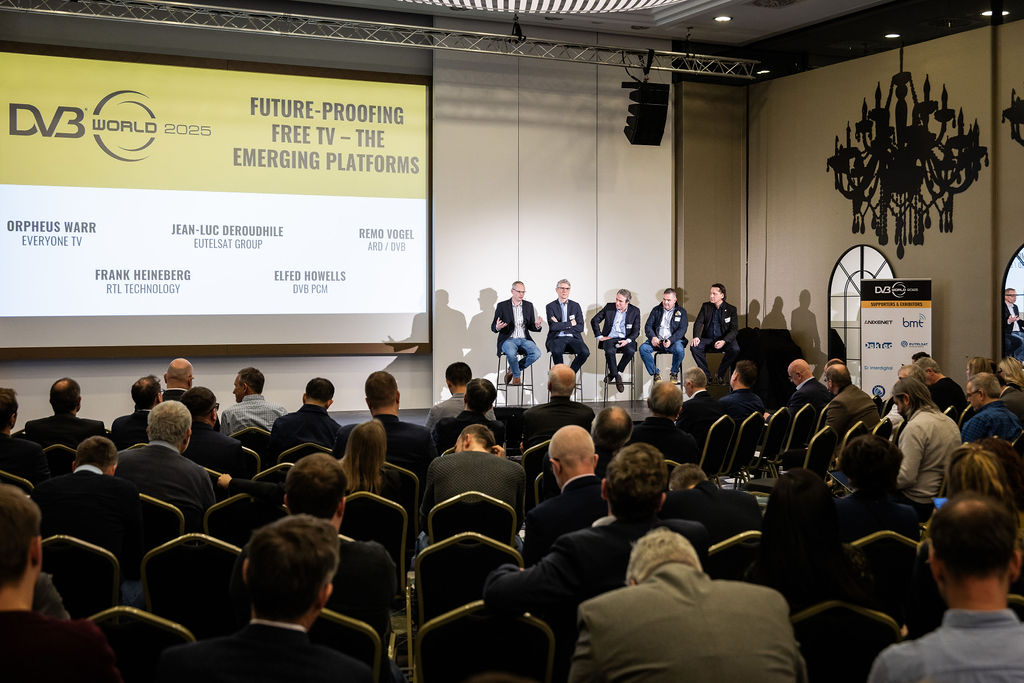
A session on the future of free television looked at some of the emerging platforms that are helping the industry transition to IP-based distribution. Orpheus Warr introduced Everyone TV’s Freely platform from the UK, while Frank Heineberg of RTL explained how the German DVB-I platform is taking shape. Jean-Luc Deroudhile presented Eutelsat’s Sat.tv Connect platform, which leverages DVB-I to manage a rich offer of free-to-air services across Europe and beyond; and Elfed Howells, who chairs DVB’s Promotion & Communications Module, provided an overview of other DVB-I related activities taking place around the world, including the trials in Italy, Ireland and Spain.
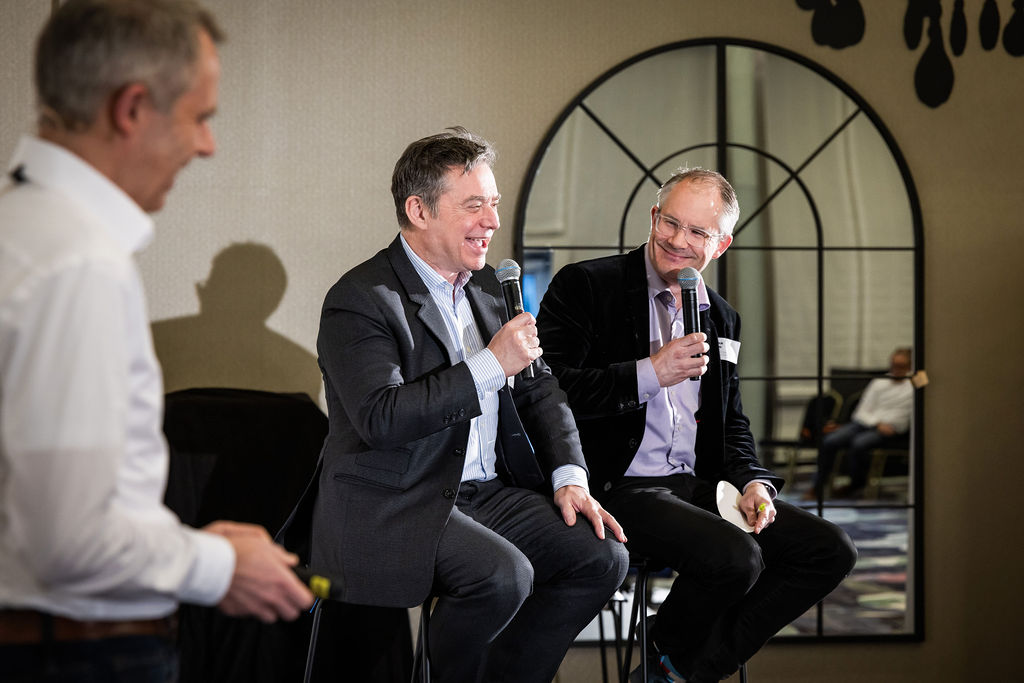
Independent consultant Matthew Huntington (above left) provided a highly appreciated analysis of the impact that SVOD services have had on the economics of the overall television industry. His thesis was subsequently critiqued by Vincent Grivet (HbbTV Association) and Johan Bolin (Ateliere Creative Technologies), who were broadly aligned with what was presented but offered some additional perspectives of their own.
The conference programme was rounded off with a session on the prospects for mobile television (and other 5G Broadcast applications), featuring Graziano Casale of Rohde & Schwarz and Djamel Leroul of TDF, followed by a look at next-generation television deployments in some other parts of the world, including the USA, the Caribbean, Brazil and India. These global briefings were provided by Raj Patel (Yotta Media) and Simone Ferrara (V-Nova).
Winners all round!
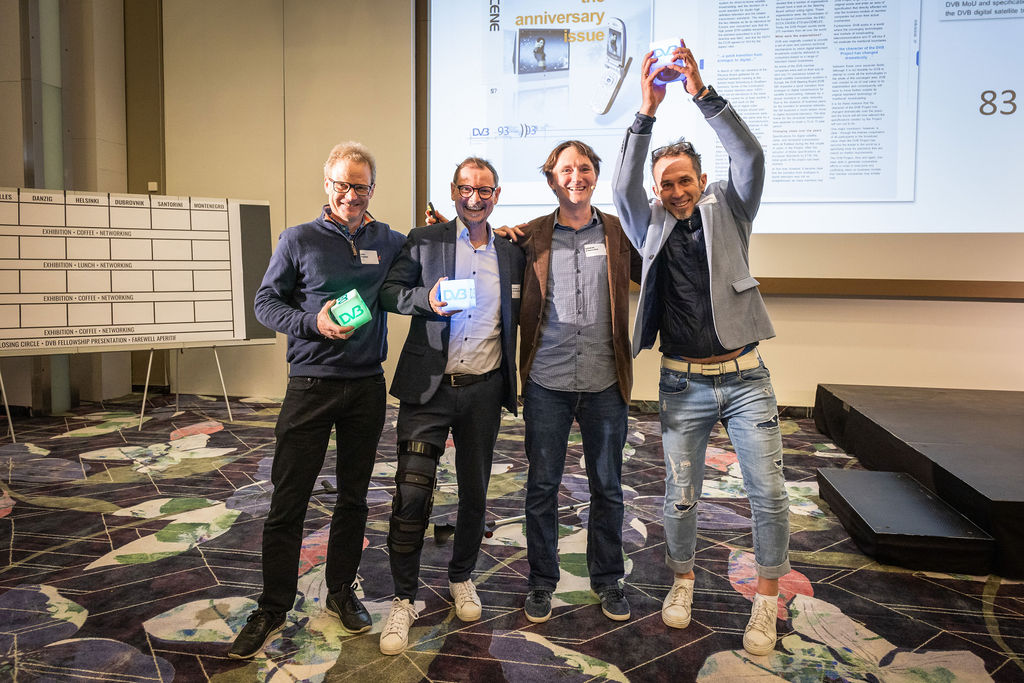
In preparation for the evening’s social festivities, a fun quiz led to Nick Thorne, Thomas Schierbaum and Thomas Stockhammer each winning a much-prized DVB ‘disco cube’.
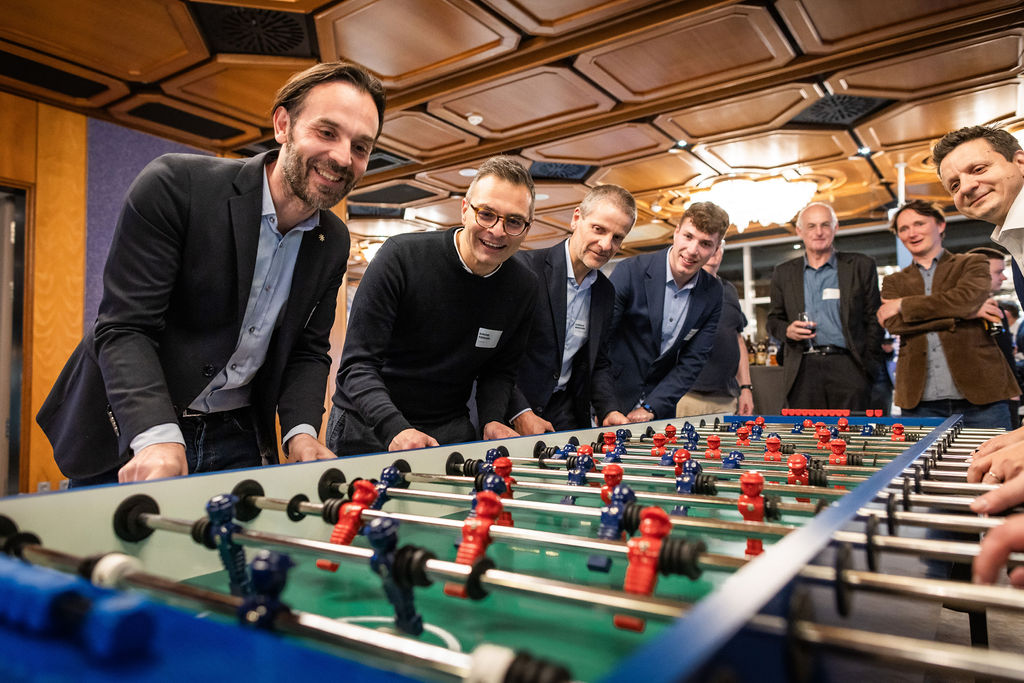
The spirit of competition continued with an impromptu table-football tournament, where the Italian team came out on top, following some closely fought battles, seeing off a strong German challenge in the final. Congratulations to Massimiliano Zilio, Simone Ferrara, Stefano Braghieri and Riccardo Principe, pictured above during their match against the Greek team, led by Fotios Tretas.
Unconference
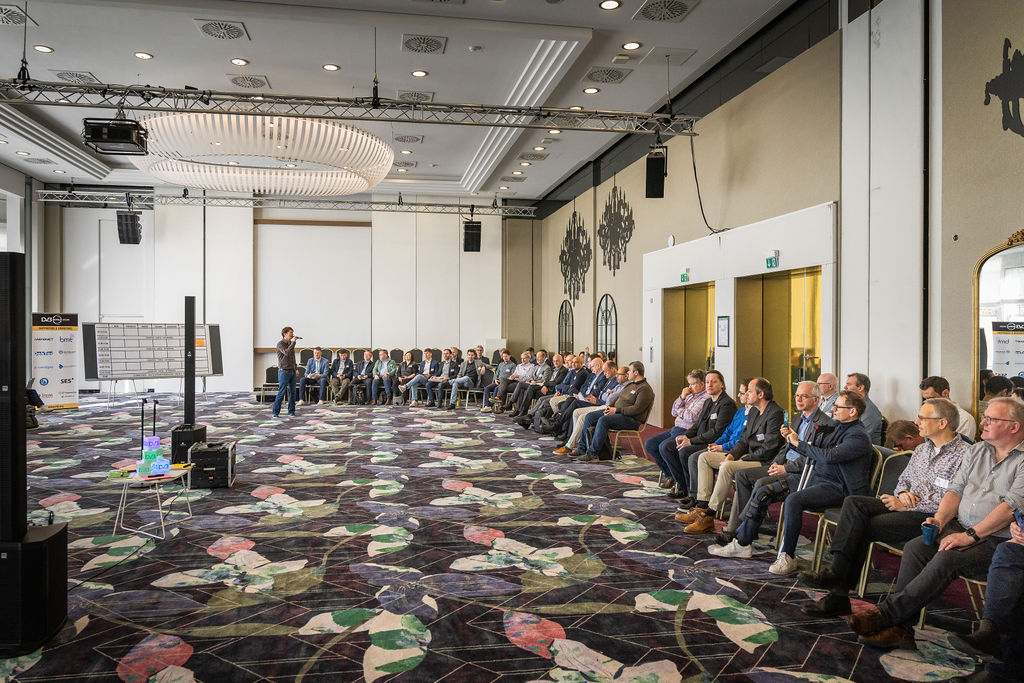
Wednesday morning saw the participants gathering for the opening circle of the unconference day, with a blank agenda ready to be filled with session proposals.
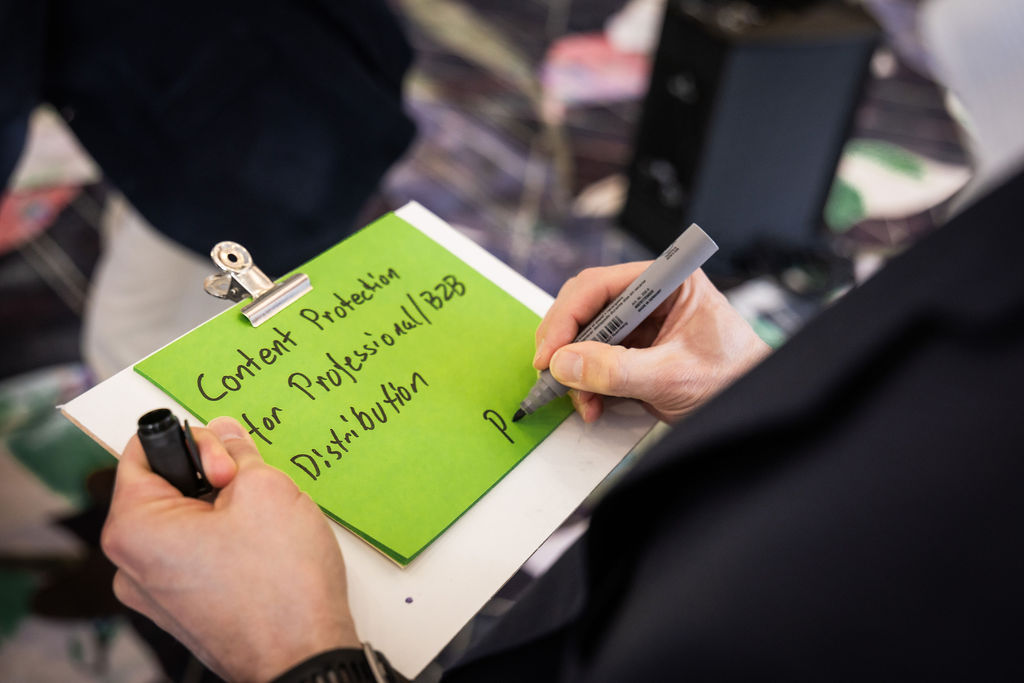
Participants were free to propose any topic of their choosing – some had been shared in advance via a wiki, others emerged based on discussions among participants as they gathered in Munich, and still others were spontaneous proposals.
The hosts then pitched their session, explaining what they hoped to achieve and who would ideally attend. They then placed their session on the agenda, giving participants the tough decision on which one to attend in each timeslot.
The full list of proposed sessions was as follows:
- Breaking silos, building (interoperable) blocks with greater SDO collaboration
- Privacy and GDPR for DVB-I
- Can you help DVB-I trials in China?
- New DVB work items for the satellite industry
- DRM – review the use cases
- How DVB can help manufacturers to produce DVB-I devices?
- DVB-I: Lessons learned & scope extension to on-demand content
- DVB-I: the opportunity for platform providers and operators
- Content protection for professional/B2B distribution
- What are challenges to scale DVB-I distribution?
- The future of DVB-DASH
- Making DVB more developer friendly
- Time to get rid of the broadcast paradigm of curated content streams?
- What if…
- DVB is still the better satellite broadband standard – and now we need to shout about it
- New DVB-I use cases
- EE: Energy efficiency
- Volumetric Video and Haptics
- DVB-I: its all about the data
- DVB IP delivery: architecture and blocks mapping to DVB specs
- Improving DVB V&V, Open-Source, test streams, etc.
- A masterclass in public speaking
The rest of the day saw participants deep in discussion in rooms around the venue, with four session blocks, each lasting an hour long. A report was filed for each session, providing an outline of the main takeaways.
All participants gathered again at the end of the day for the closing circle. Here, each session host was asked to highlight any concrete actions that had been identified in their session. These were noted so that they can be reviewed by the chairs of the relevant DVB working groups and revisited later in the year to assess what progress has been made.
Exhibition
The exhibition space, which was open throughout the event whenever conference/unconference sessions were not running, featured nine booths showcasing implementations of DVB’s latest specifications.
The video below provides a short overview of each exhibitor.
Join us next year!
DVB World will return in 2026. The location and dates will be confirmed in the coming months. If you wish to be informed, please join the DVB World mailing list.
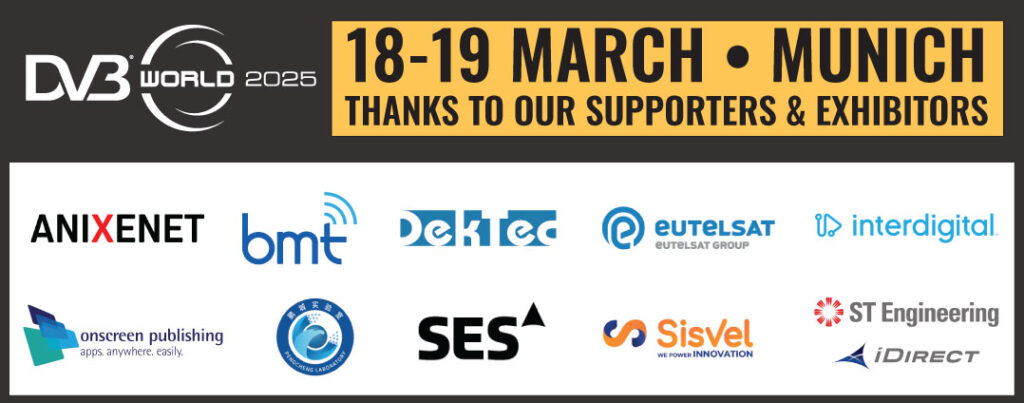
(All photos by Tomas Hercog)
